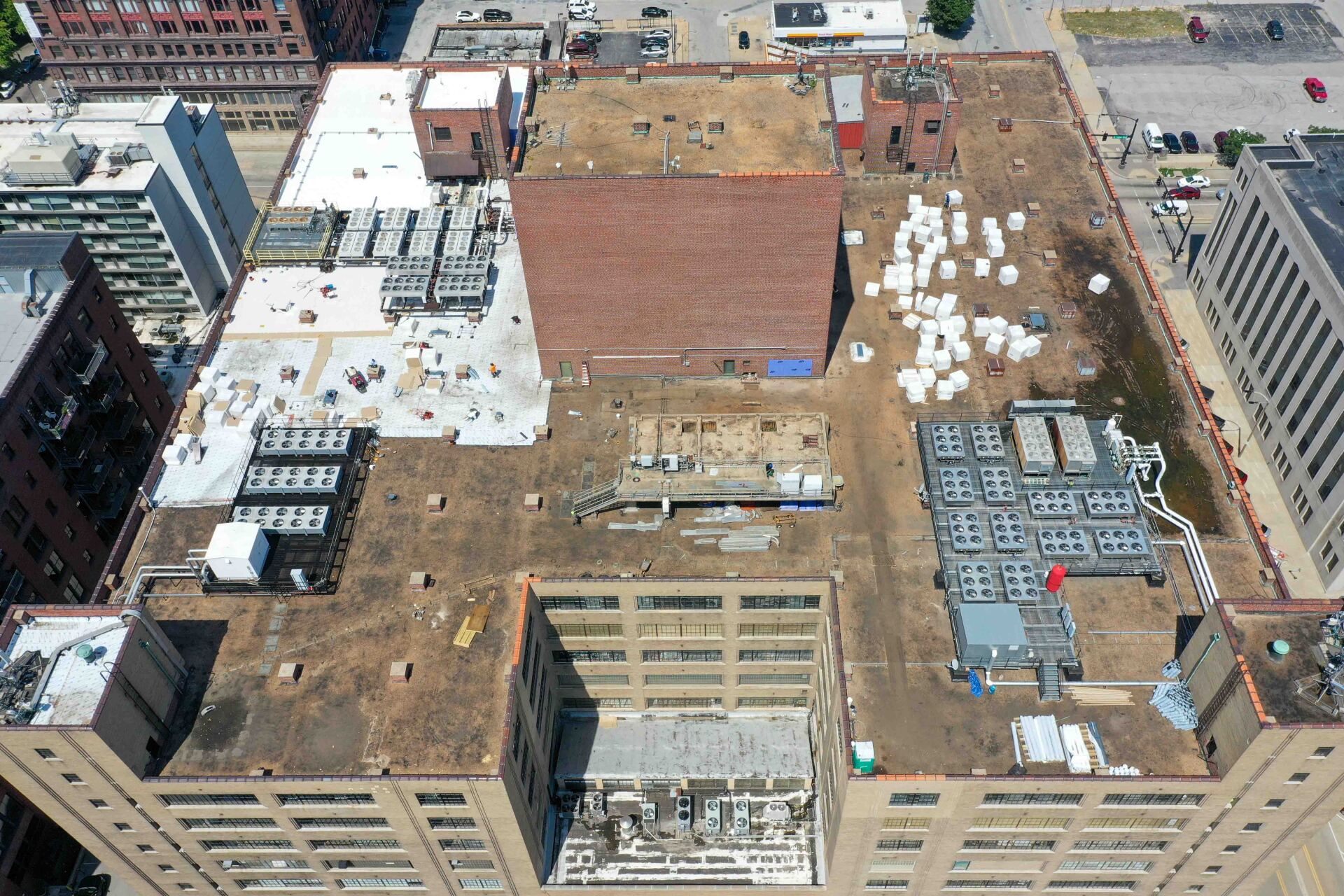New Construction Vs. Renovation: A Guide

New Construction Vs. Renovation: A Guide
When business and property owners choose to expand their physical presence, they often turn to commercial construction contractors to get the job done right. Together, both parties can work together to decide whether new construction or renovation is the best, most cost-efficient option.
Why Choose Renovation?
Whether renovating a currently occupied commercial building or buying one with the plans to renovate, this is generally the most cost-effective option for business owners to pursue. Between inflation, rising construction material costs and growing talent gaps, it’s now more expensive than ever to build new construction properties.
Renovations are also much quicker and the process is much shorter than building new construction properties. This can come in handy when businesses are on a tight deadline or can’t afford the downtime or relocation that happens with a new build. Change orders and cost overruns are much more common during these projects too when compared to renovations.
For business, property, or franchise operators and owners that would like to create a space that’s customized, it’s a mistake to think that new construction is the only option. Renovations allow owners to personalize and customize cookie cutter buildings that they want to improve to better meet their needs.

Building From the Ground Up
It’s also true that new construction allows for full personalization, and that in and of itself is perhaps the biggest advantage of choosing new construction over renovation. Distinctive design, cutting-edge layouts, specialized rooms and wings of a commercial building -- new construction allows for full control in the creation of these spaces.
When choosing between financing the cost of renovations versus the cost of new construction, the latter will almost always be easier to secure. There are significantly more lenders that will offer business owners loans to build a free-standing commercial building than they will offer to those who want to renovate. Additionally, any lender will include a margin in the total loan amount to protect against unexpected cost overruns.
Property owners may also find that existing spaces cannot be renovated, either due to structural challenges, permitting restrictions, or even historical building regulations. In this case there’s no other option but to find a new location and build a commercial property from the foundation to the roofline. Organizations that support sustainability initiatives and want to get LEED certification may want to consider choosing new construction or renovation.
Choose the Right Contractor
Don’t start your contractor search without first creating a solid plan. Ask (and answer) these questions: Will you be remodeling or building from the ground up? What’s your budget? What kind of timeline are you envisioning? Take a deep dive into the financial analysis of the project you’re planning; these numbers will come up frequently throughout the entire process.
Once you’re clear on a plan and a budget, get quotes and remember that the cheapest option isn’t always the best. Check portfolios and references, and be clear upfront with your expectations. Once you’ve chosen a contractor, they will be able to answer any additional questions you may have about the construction project. Property owners will also need to decide whether the building can continue operating as usual or will need to shut down temporarily. Some businesses may even need to temporarily relocate to minimize disruption.
The best way to get the most out of your commercial construction project is by working with a commercial construction contractor who has experience. A contractor who offers design-build services can identify issues before they create cost or scheduling overruns. From the ground up, any commercial construction project starts with a team that can read blueprints, tackle permitting, comply with local building codes and zoning ordinances, along with managing labor and cleaning up when the work is done. Communication needs to be prioritized along the way as well.

Choose Contractors Wisely
Wright Building Systems is a woman-owned (WBE certification pending) general contractor serving clients across the Greater St. Louis region. We specialize in commercial construction and high-end residential renovations. We are SCIF certified to be able to create and design secure portable, modular facilities (Sensitive Compartmented Special Access Program Facilities) with the latest technology to governmental department or agency’s exact specifications and uniform security requirements.
We are a proud, woman-owned company whose employees all share one thing: the passion to deliver quality and profitable projects on time and on budget. We are highly experienced in all aspects of a build: estimation, construction, project management, preconstruction services, and construction and can bring any project from idea to completion at a fair price and a reasonable timeframe.
For a job done right, call Wright Building Systems!



